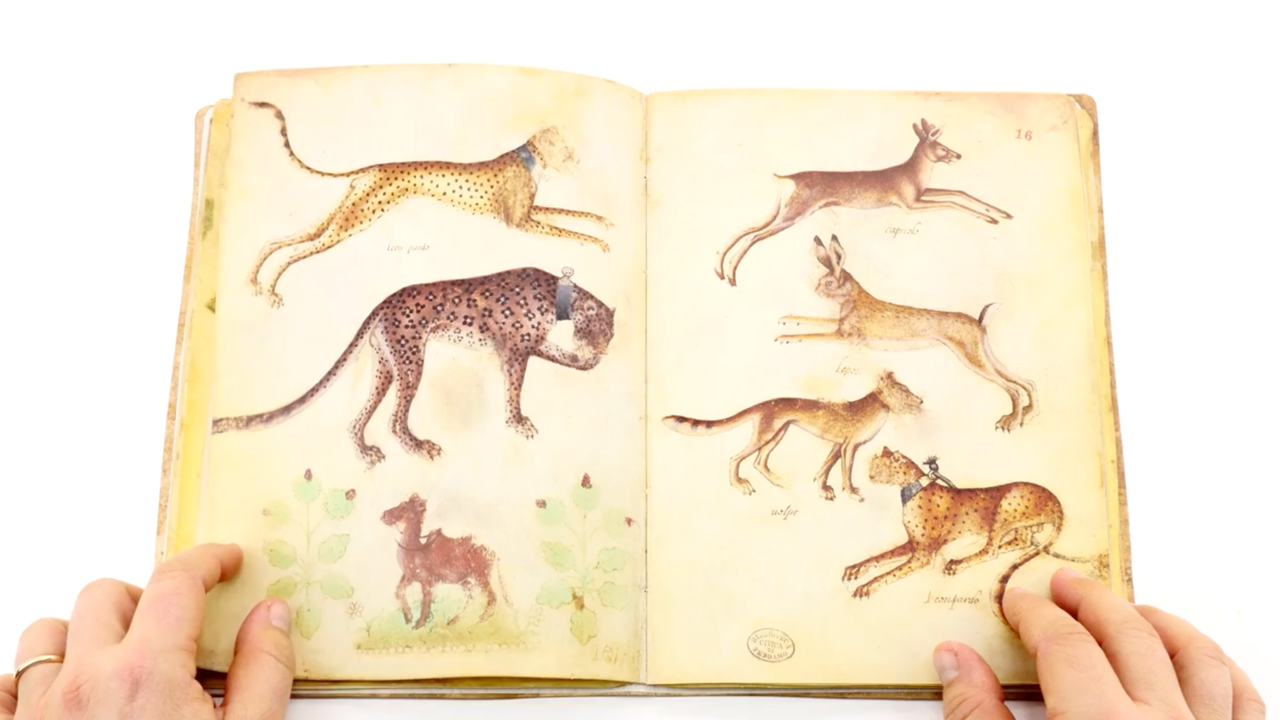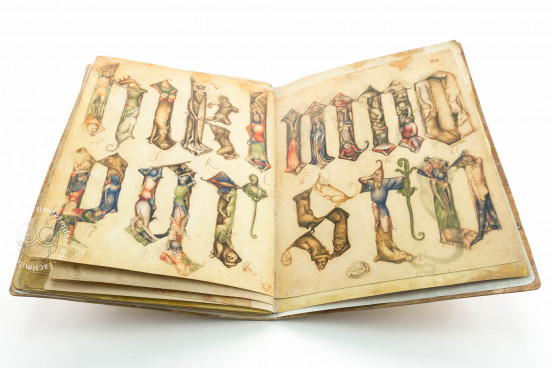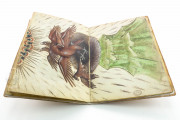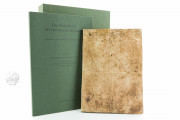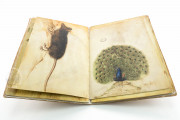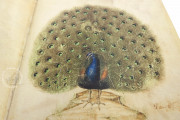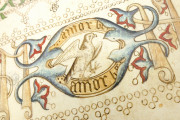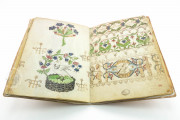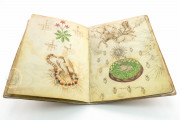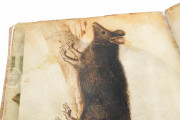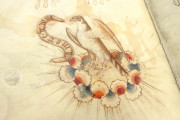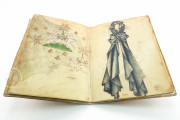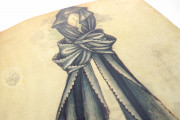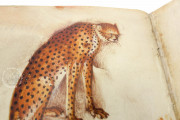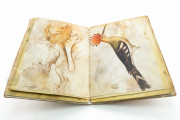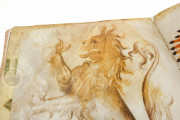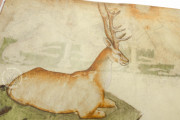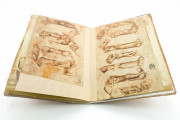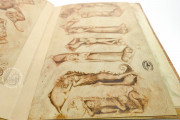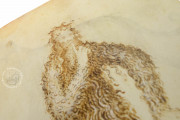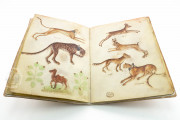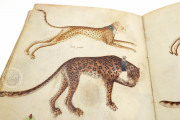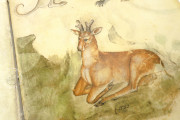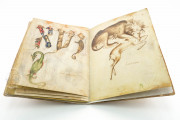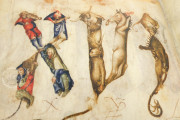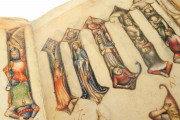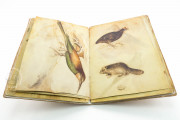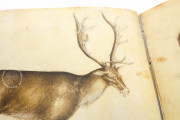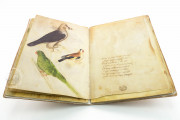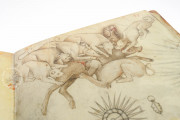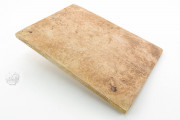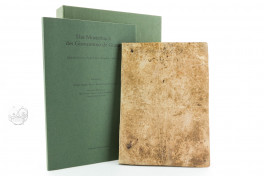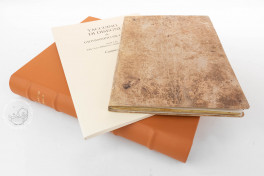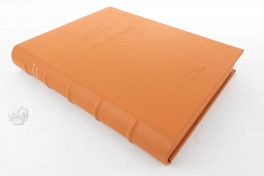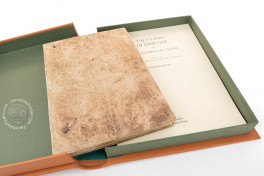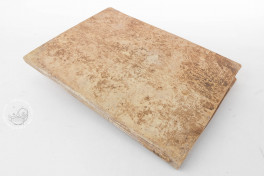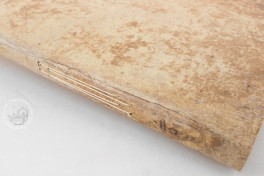The Sketchbook of Giovannino de' Grassi was produced in Italy in the second half of the fourteenth century. It served as a model book, providing de' Grassi's workshop with around a hundred compositions to be copied and adapted. The book includes an ingeniously devised Gothic alphabet, with each letter composed of various figures and creatures. Local and imported animals are represented throughout, some naturalistic, and others stylized. As such, the book is a testament to the collaborative nature of pre-modern art.
The Sketchbook of Giovannino de' Grassi represents the most treasured manuscript in the Angelo Mai Public Library of Bergamo and is widely acknowledged as the quintessential exemplar of late Gothic Italian artistry.
The Artist: Giovannino de' Grassi
Giovannino de' Grassi, the master responsible for this manuscript's exquisite illustrations, exemplified the Renaissance ideal of the universal artist. His prodigious talents extended beyond painting to include drawing and sculpture, culminating in his appointment as architect of the Milan cathedral.
At the zenith of his professional career, de' Grassi maintained intellectual exchanges with prominent architects of central European Gothic cathedrals, notably Heinrich Parler and Ulrich von Einsingen. These connections not only reinforced the Lombardian master's professional standing but presumably catalyzed his production of drawings that documented his artistic conceptions.
Model Books: Visual Paradigms in Medieval Artistic Practice
Such model books constituted an essential resource within medieval artistic workshops. These compilations featured sophisticated ornamental motifs, exemplary calligraphic initials, and naturalistic animal illustrations. Medieval artists typically lacked opportunities for direct observation of exotic fauna such as leopards, gazelles, or lions in their natural habitats.
To achieve verisimilitude in their zoological representations, artists required reference models that viewers could readily identify. Model books thus furnished paradigmatic illustrations depicting both human subjects and animals in characteristic postures or engaged in representative activities.
Given their profound artistic significance and transformative influence on stylistic developments, these model books rapidly acquired value as collectors' items among connoisseurs.
Exemplary Archetypes for Subsequent Artistic Generations
The model book presents a diverse bestiary of creatures. Sheep and lions coexist harmoniously, while ostriches, porcupines, and monkeys populate the manuscript's folios. Of particular scholarly interest are the meticulously rendered human groupings.
The illustrations include women playing lyres or congregating for reading, alongside maritime scenes featuring sailing vessels. Each individual folio constitutes an autonomous artistic achievement, executed with such consummate skill that numerous subsequent painters adopted de' Grassi's illustrations as templates for their own artistic productions.
The Internationally Renowned Figural Alphabet
Among the most exceptional components of the model book are five folios containing Giovannino de' Grassi's celebrated figural alphabet. These Gothic letterforms, masterfully rendered by de' Grassi himself, integrate both anthropomorphic and zoomorphic elements. Musicians and angelic figures populate the manuscript alongside remarkably naturalistic depictions of lions and bulls, demonstrating the artist's virtuosic command of form and composition.
We have 2 facsimiles of the manuscript "Sketchbook of Giovannino de' Grassi":
- Musterbuch des Giovannino de Grassi facsimile edition published by Faksimile Verlag, 1998
- Taccuino di disegni di Giovannino De Grassi facsimile edition published by Il Bulino, edizioni d'arte, 1998

